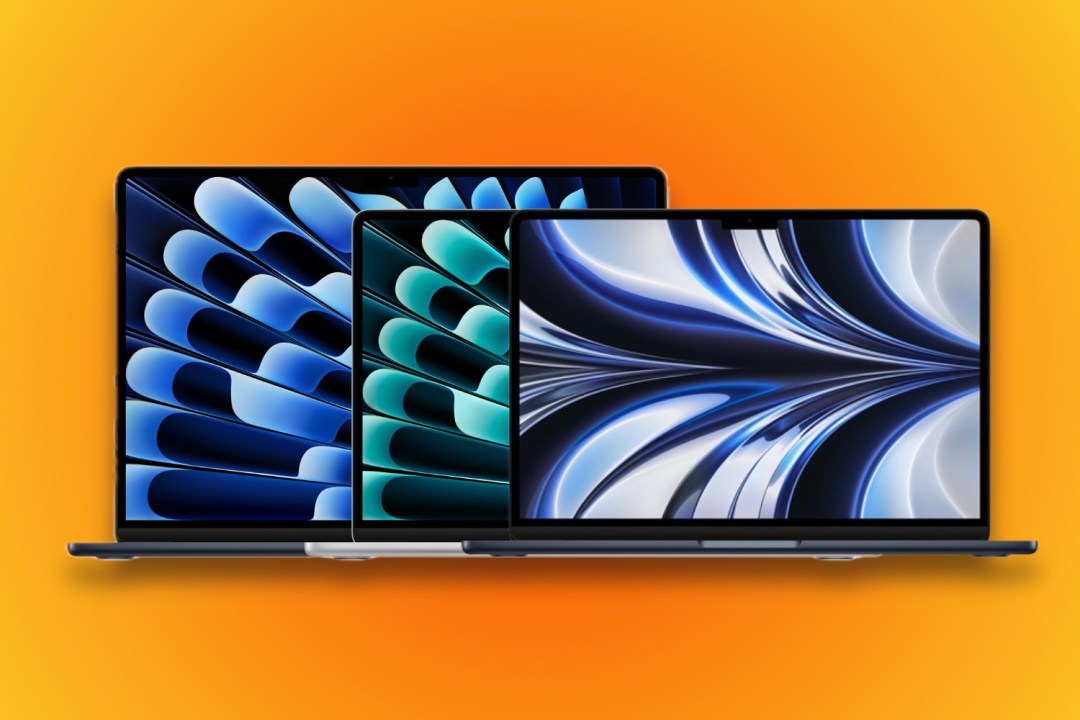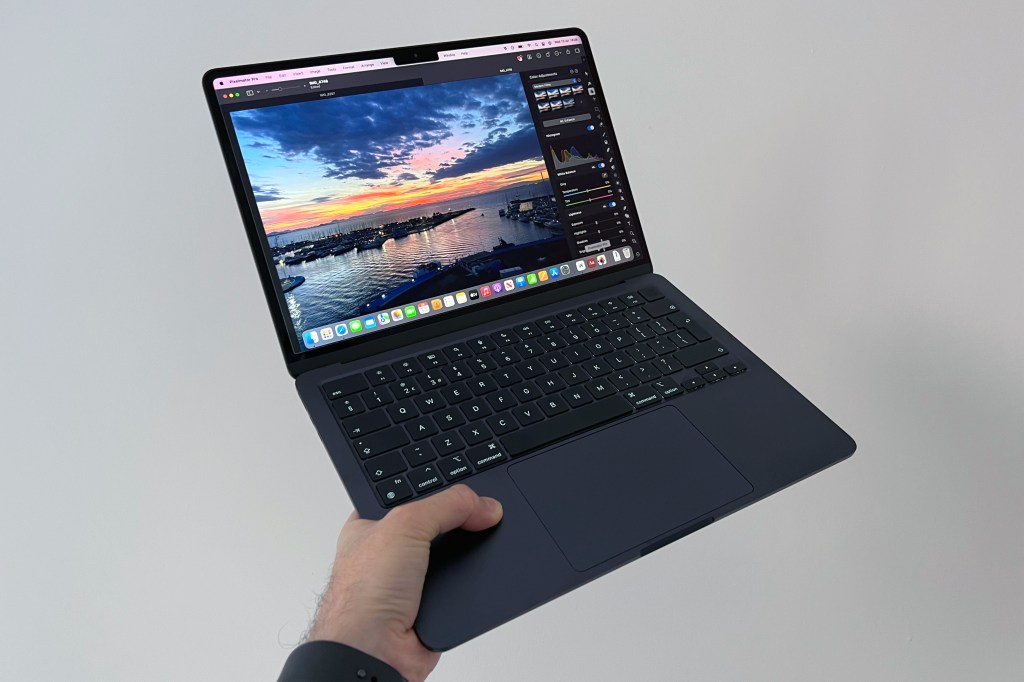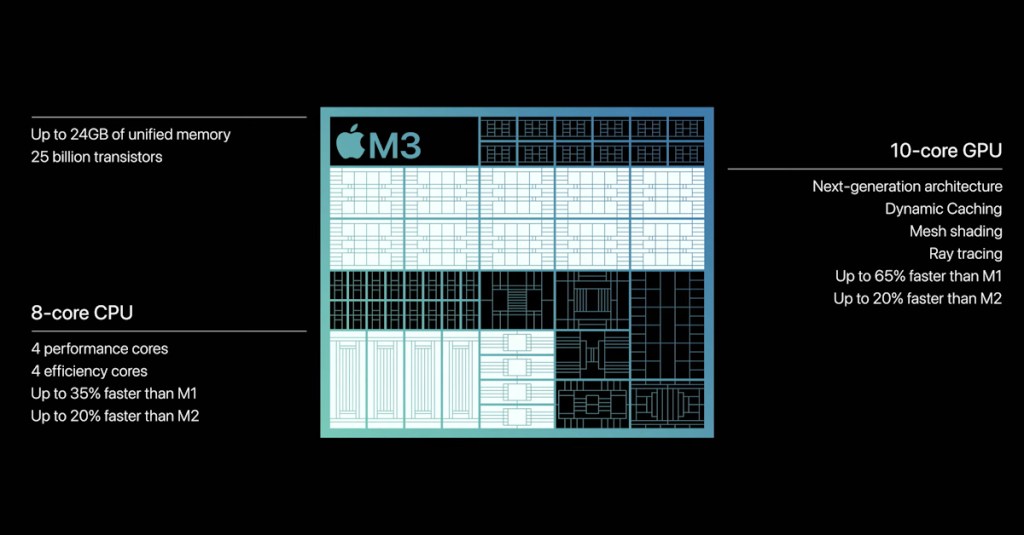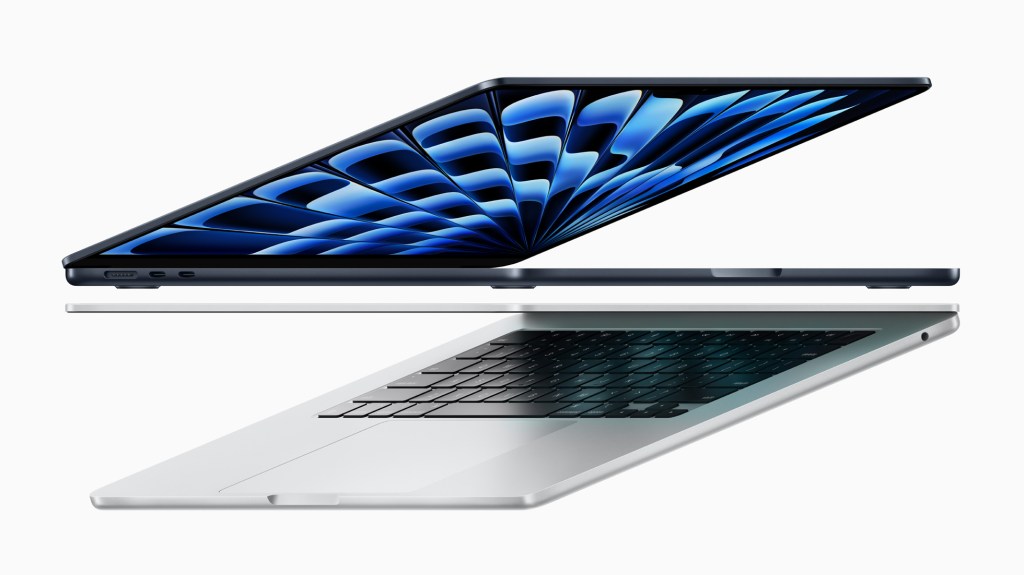Apple MacBook Air M3 vs MacBook Air M2: what’s the difference?
There's a difference in power under the hood thanks to M3, but otherwise, these MacBook Air models are pretty similar.

Apple’s MacBook Air is one of the slimmest laptops kicking about, and one of the best value options. There’s a new model on the block, sporting the M3 processor with its shiny new 3nm architecture. It looks more or less the same as its M2 predecessor, and offers most of the same features.
So, what’s the difference between these two Apple notebooks? Here, we compare the latest MacBook Air with M3 against the previous-gen device packing M2.
MacBook Air M3 vs MacBook Air M2: design and features

Since 2010, MacBook Air models had been easy to spot thanks to their pronounced tapered, wedge-shaped design. That all changed with the MacBook Air (M2), which introduced a flat-edged design that makes them look almost like the current 14in and 16in MacBook Pro models. Away went the tapered design, and down came the notch. It’s a MacBook that looks like a new MacBook. And this design remains unchanged on the new M3 model.
Across both generations, you can bag either a 15in or 13in model. The larger display of the 15in doesn’t add a lot of extra weight. The MacBook Air 15in measures 13.40 x 9.35 inches or 340 × 238mm, weighs 3.3 pounds/1.51kg and is 0.4in/11.5mm thick. By contrast, the 13in model is 11.97 x 8.46in or 304 x 215mm, 0.44in/11.5mm thick and weighs 2.7 pounds or 1.24kg.
Both models are available in four colour options: silver, starlight, space grey, and midnight. The colours are stunning, but it’s worth noting that the midnight option is prone to displaying fingerprints and requires frequent cleaning. That’s something that Apple fixed in the M3 model, adding an anodization seal from the black MacBook Pro. It’s a nice touch that’ll keep the outside of your laptop looking as fresh as the day you took it out the box.
On both laptops, you’ll find two Thunderbolt/USB-C ports, each offering up to 18 hours of regular use between charges. There are several other similarities between the two devices, such as the 1080p FaceTime HD camera, available storage options (ranging from 256GB to 2TB), and a keyboard with 12 full-height function keys and four arrow keys arranged similarly. Both products also feature Touch ID and a 3.5mm headphone jack with advanced support for high-impedance headphones. On the newer M3 model, you’ll find support for two external displays rather than just one. Plus, the M3 MacBook Air offers the faster Wi-Fi 6E.
Across the two generations, the display remains the same – with the biggest differences between the sizes. The 15in MacBook Air offers a 15.3in Liquid Retina display with 2880 by 1864 pixels (224 PPI). The smaller model features a 13.6in Liquid Retina display with 2560 by 1664 pixels (224 PPI). On either model, you get 500 nits brightness, wide colour (P3), and True Tone technology.
MacBook Air M3 vs MacBook Air M2: performance

Between the M3 MacBook Air and older M2 version, the biggest difference is performance. The model with the M2 chipset offers an 8-core CPU, up to 24GB of unified memory, and a 16-core Neural Engine. Additionally, the M2 chip provides 100GB/s memory bandwidth, making it a powerful component in these laptops. As for GPU, the MacBook Air 15in only comes with a 10-core GPU, while the 13in model comes with an 8-core or 10-core GPU, depending on the amount of storage you select.
But the newest model packs the spanking new M3 processor, which Apple showed off at the end of 2023. It’s the first chipset in the industry made using 3nm technologies, just like the iPhone 15‘s chip. It lets Apple cram even more into the processor. The biggest change is the GPU, bringing the biggest upgrade to Apple silicon. Dynamic caching lets the GPU use local memory so only the exact amount that’s needed for each task gets used – bumping performance significantly. You can spec out a model up to an 8-core CPU and 10-core GPU with up to 24GB of RAM – which are similar numbers to M2… on paper.
But how does this translate into the real world? Apple reckons the new Air model is 60% faster than its M1 counterpart and 13x faster than the last Intel model. If you compare it to the M2 processor, things aren’t quite as big of a leap – roughly 15% faster for CPU performance. When we reviewed the M3 iMac, we found the performance to be somewhere between the M2 and M2 Pro processors. So you can feel it’s faster than the previous-gen, but not as much as its Pro sibling.
What’s the verdict?

The MacBook Air continues to be a fantastic value laptop, with the M3 chipset making it more powerful than ever. It’s certainly not a huge upgrade, and not something you need to consider if you’re rocking the M2 version already. The extra display support and performance will make for tasty upgrades if you’re coming from an older machine. And that 60% performance bump compared to the M1 model is impressive.
But, we’d have to recommend getting the older M2 version for most. So that the new M3 models could debut at the same $1099/£1099 and $1299/£1299 price points, the M2 version now starts $100 cheaper at $999. It’s the sort of deal we’d have previously looked at. For most, this device is going to give you more power than you need and the most bang for your buck.